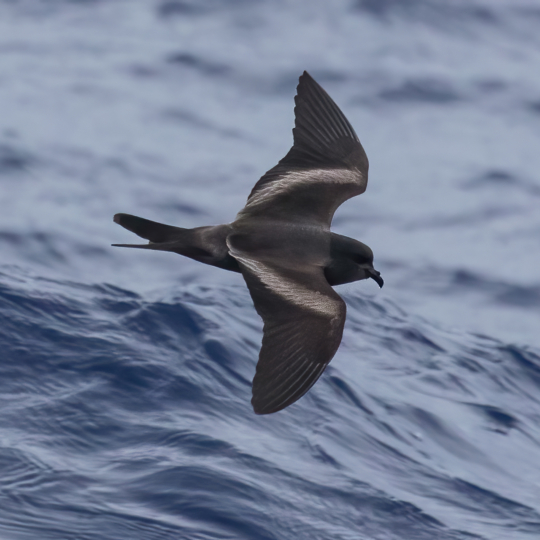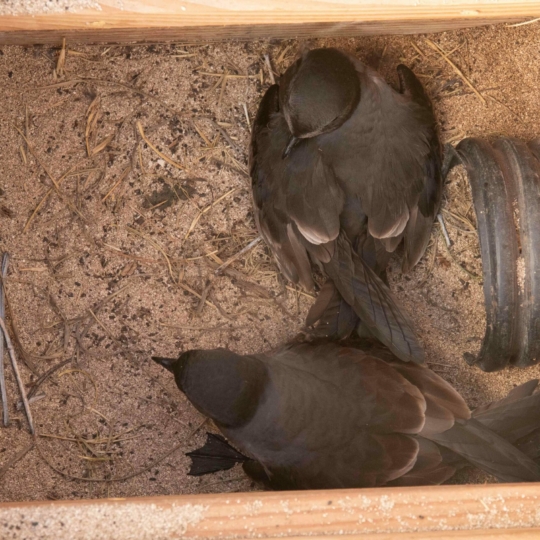Tristram’s Storm-petrel
Status: Indigenous to Hawai’i, IUCN: Least Concern
Hawaiian Name: ‘akihike‘ehi‘ale
Scientific Name: Hydrobates tristrami
Family: Hydrobatidae
Population: ‘Akihike’ehi’ale breed on all of the Northwestern Hawaiian Islands except Midway and Kure. It is possible they also historically bred on both of those atolls and on the main Hawaiian Islands. Outside of Hawai‘i, breeding colonies only occur on three small Japanese islands. Outside the breeding season, ‘akihike‘ehi‘ale range across the subtropical central and western Pacific Ocean.
Feeding: ‘Akihike‘ehi‘ale typically forage by grabbing fish and squid from the ocean surface. Like most storm petrel species, they often “step” on the water with their feet, which may attract small prey items. In Hawai‘i, the diet includes small fish, squid, coelenterates, and crustaceans.
Breeding: ‘Akihike‘ehi‘ale are winter breeders, laying eggs between December through February, with nestlings fledging by June. They are active at night, nesting in rock crevices or burrows that they excavate under vegetation such as naupaka. There is little information on parental care of eggs or young.
Life Cycle: Like most storm petrels, the age at first breeding is thought to be three to five years, though data from PRC show they can breed when just two years old. Their lifespan is likely between 15 and 20 years.
Cultural Information: ‘Akihike‘ehi‘ale translates to “the bird that steps on water.” It is an old name found in the writings of Hawaiian historian Kepelino and other Hawaiian language newspaper sources from the 1800s. After reviewing historical information and current photos and videos describing the birds’ foraging behavior, physical features, flight, and sound, it was believed that the ‘akihike‘ehi‘ale spoken of in the historical documents is the Tristram’s Storm-petrel, and this became recognized as the current Hawaiian name in 2020.
Conservation: Despite the IUCN categorization as Least Concern, this species is threatened by climate change and invasive alien predators. Most breeding colonies in the Hawaiian Islands are located on low-lying atolls that are at risk of inundation. The small colonies on Japanese Islands are located on islands with invasive rat populations and are not secure.
PRC and ‘Akihike‘ehi‘ale: To help mitigate threats from rising sea levels, Pacific Rim Conservation translocated ‘akihike‘ehi‘ale chicks to establish a breeding population on O’ahu. From 2018-2022, we translocated 110 ‘akihike‘ehi‘ale from Kānemilohaʻi (Tern Island) in Papahānaumokuākea Marine National Monument to O‘ahu. We raised the chicks by hand until fledging at James Campbell National Wildlife Refuge in Kahuku. Translocated individuals began returning to the refuge in 2020 and have been breeding there since 2022.
Sources: Division of Forestry and Wildlife: Wildlife Program | Tristram’s Storm-Petrel (hawaii.gov)
Tristram’s Storm-Petrel – Hydrobates tristrami – Birds of the World
Microsoft Word – PressRelease_Hawaiian Names Given to 5 species atPapahanaumokuakea_FINAL_12.01.2020.docx (windows.net)



